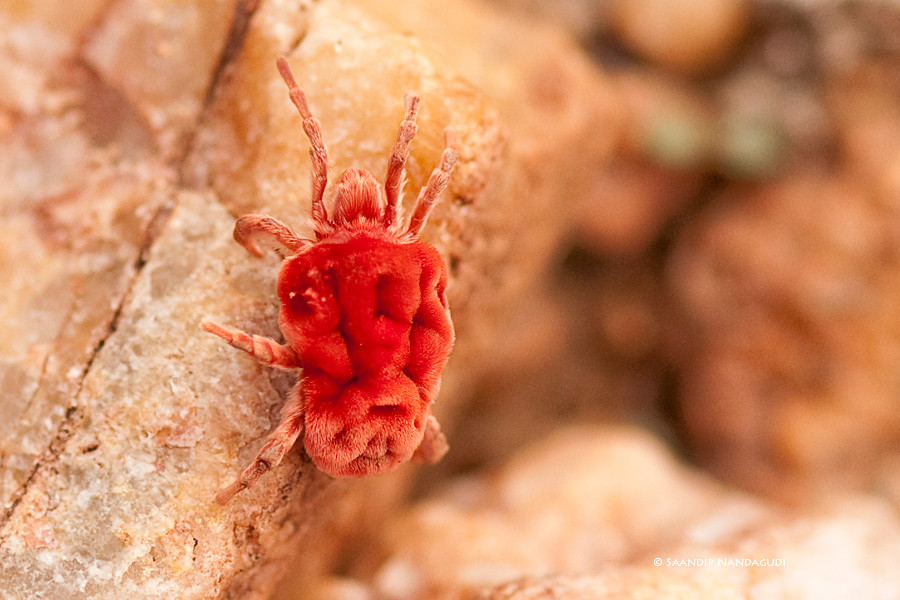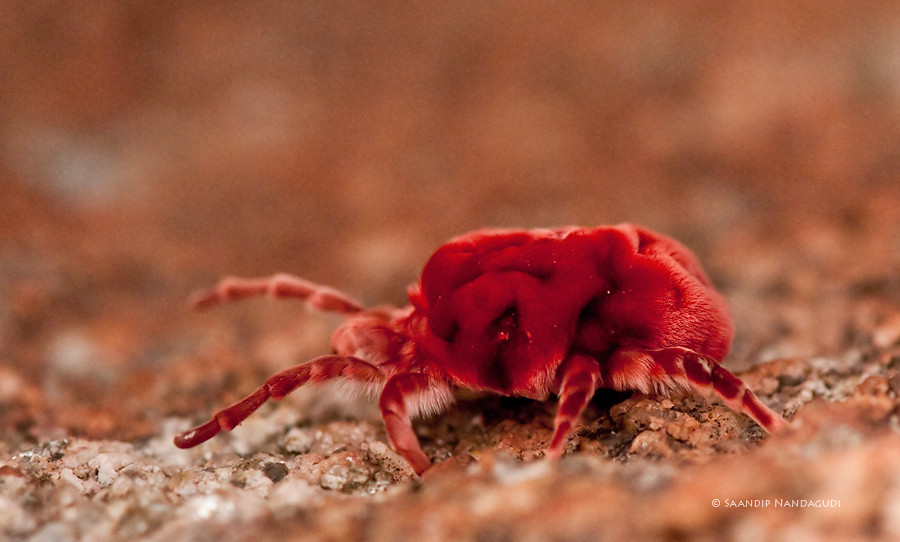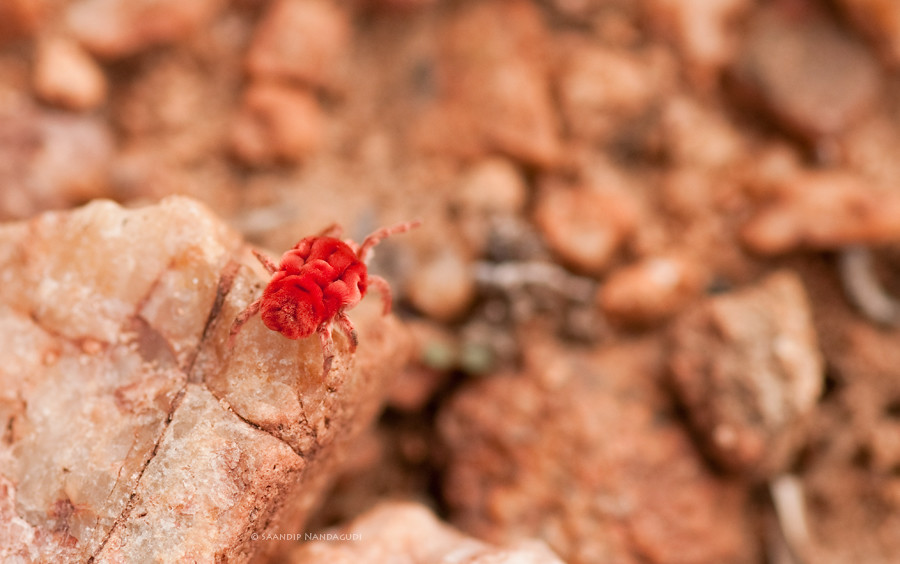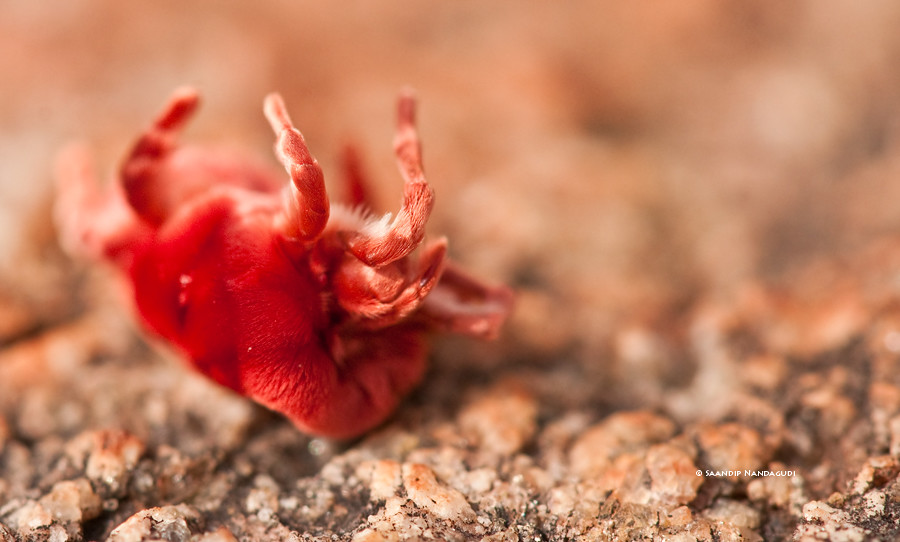Red velvet mite is an arachnid that belongs to the family Trombidiidae. They are found in most parts of the world from tropical regions like South India and sub-Saharan region to cold regions like Canada and Scotland.

Red Velvet Mite
Recently I had a chance to volunteer Uniform distribution to forest guards by WWF at Daroji Bear Sanctuary . During two day stay at Daroji forest guest house I happened to see these small red creatures moving at early hours of the day, especially after early morning showers.

They spend most of their time hiding in the soil. Usually emerges after early season rains and can then be seen scouring the ground in large numbers. This is how the mite, T. grandissimum, got one of its nick-names, the “Rain’s Insect.”

They are only visible a few weeks out of the year. Trombidium grandissimum helps regulate soil ecosystems by keeping other insect and spider populations in check by including them in their diet. This also extends the life of bacteria and fungi, the most important decomposers of organic waste in soil ecosystems.

Velvet mite constantly scout the ground & if disturbed it will curl & stay still for sometime or even roll over.

The development and life cycle of the velvet mite consists of the following steps:-
- The pre-larvae stay close to the area where they hatched from
- The larvae are ectoparasites
- Protonymphs and tritonymphs are calyptostatic,
- The deutonymphs and adults are free living predators.
A host can be parasitised by one to many larvae. For example, a single housefly could host 40 larvae and a grasshopper might sometimes have hosted 100+ larvae.

Grasshopper parasitised by Larve of Red velvet mite
Some species of larvae have oral rings that encircle the wound and also provide anchorage to the hosts and some other species are known to have feeding tubes attached to the hosts
These mites do not survive in captivity. The red colour of the mite is a warning to predators to tell them that they do not taste good, or that they are harmful for which they have very few predators.
They have different names and their English translation is listed below:
Rain’s insect
Scarlet fly
Lady fly
Queen Mite
Rain Mites
Bride of the sea-farer
Velvet bride
Little old lady of monsoon.
External References:
http://bioweb.uwlax.edu/
they were so common when I was a child, now it is very rare to find them. Insecticides have taken a toll on their population too…
yes the pesticides have made a big impact on everything..
Great post. Amazing photos!
Thanks Deepa
Super post Saandip
Thanks Poornima
Very Informative! Thanks!
Thanks Bharat..
sooper gurugale 🙂
Thanks Buddhi 🙂
beautiful sandeep…..
Thanks GT 🙂
lovely images and post Saandip… 🙂
Thanks Santosh 🙂
can we harvested in large scale
or how can we get in large scale
plz reply
Hi.
I am really not sure on harvesting.